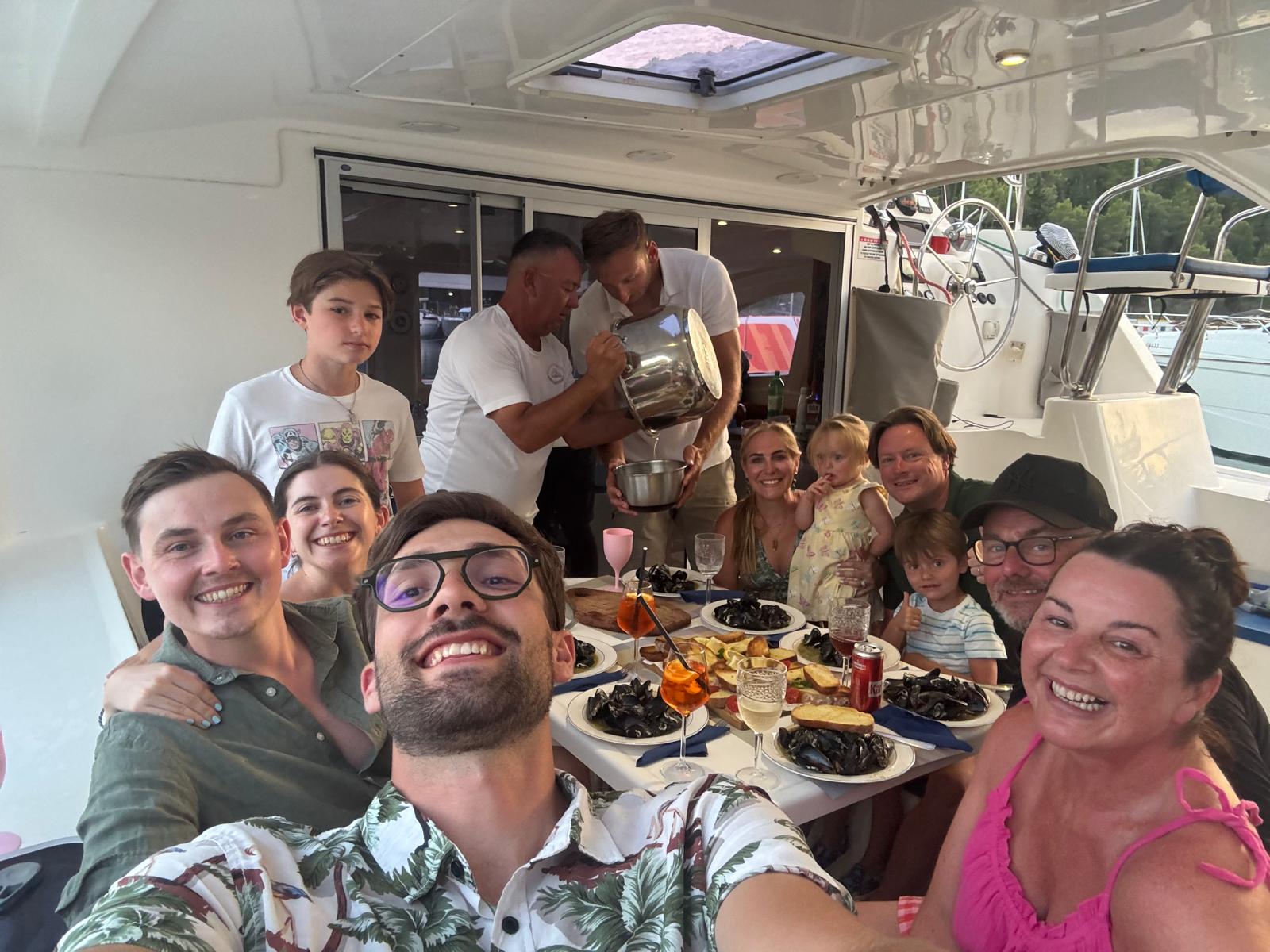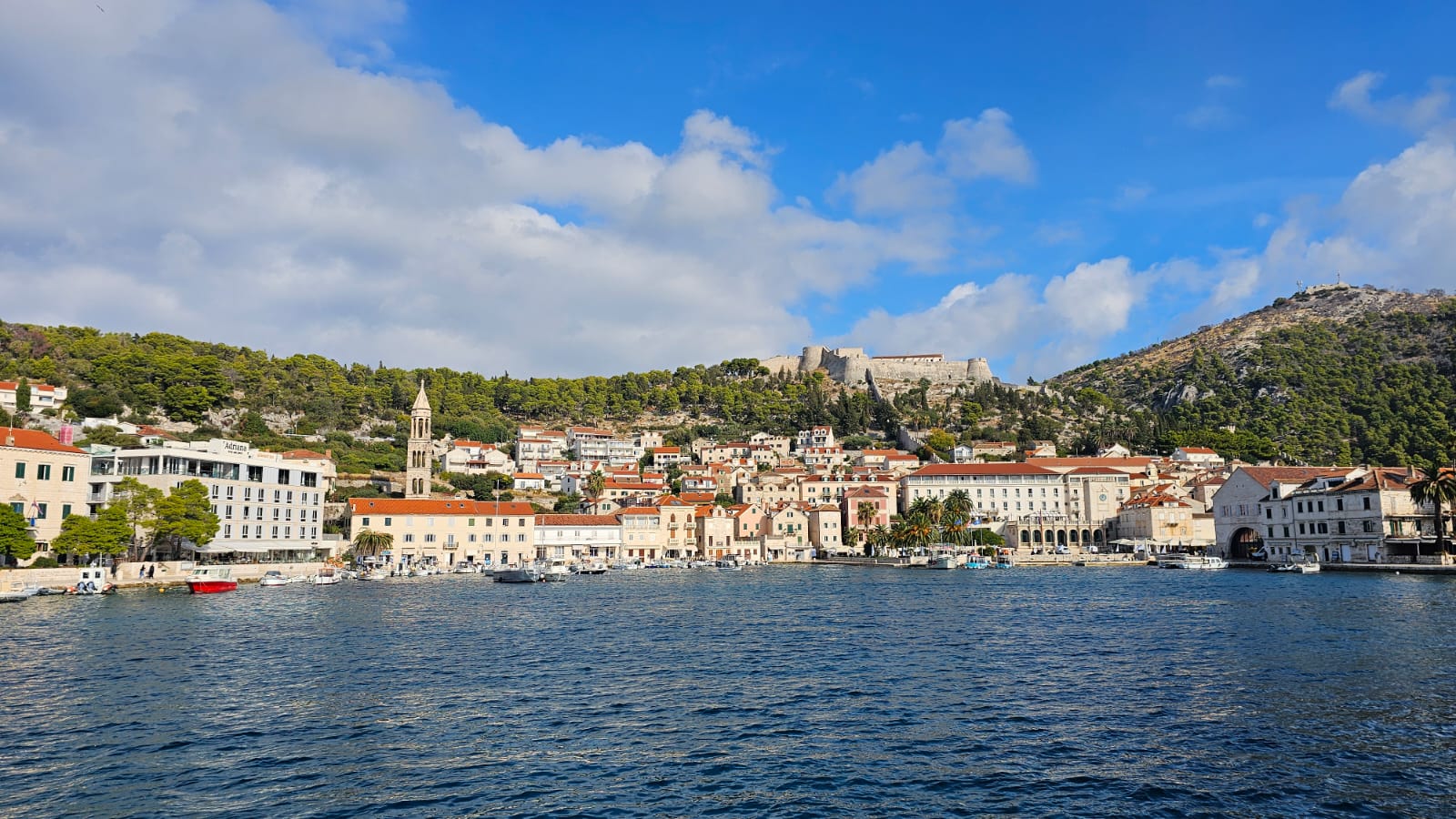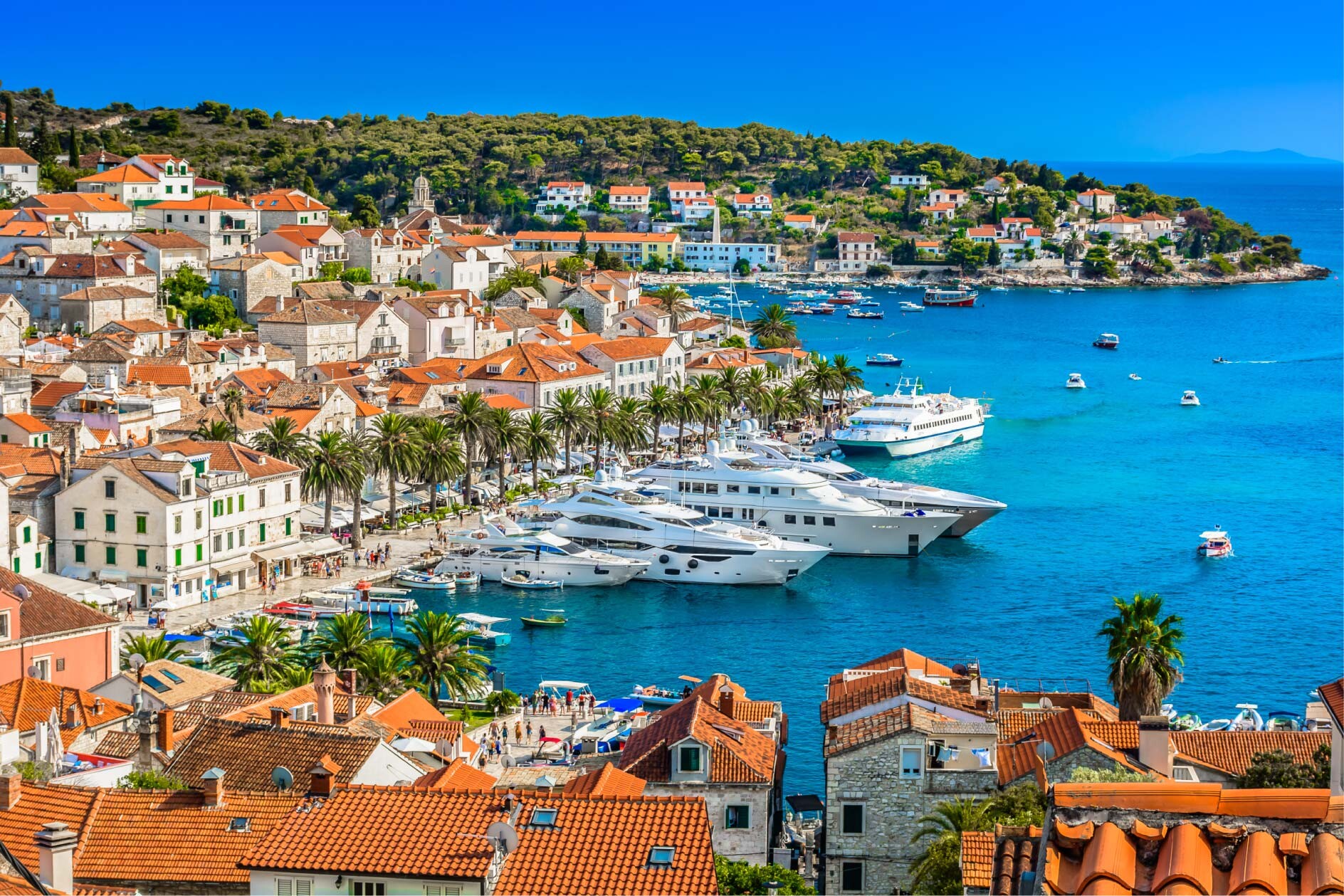The first moments on Palmižana feel like a dream. The island bursts with colour and fragrance: rosemary, sage, lavender, basil, mimosa, and orange blossoms blend into a natural perfume that’s impossible to forget.
Back in 1906, Professor Eugen Meneghello began planting exotic species such as palms, agave, cacti, eucalyptus, and aloe vera, creating a lush garden that soon became a hideaway for travellers searching for peace and connection with nature.
Here, Dagmar Meneghello carries that spirit forward, blending art, nature, and slow living. Together with the friends of the Škorpion Art Gallery, she has spent decades discovering and promoting new artistic talent.
The gallery, often described as “the gallery at the end of the world,” is an open space where artists and art lovers meet, surrounded by pine trees, sculptures, and the timeless beauty of Palmižana.
Surrounded by pine trees and sculptures, the Meneghello Bar and Restaurant feels like a little world of its own.
It is a gentle reminder that the Adriatic is not just about sun and sea but also about creativity, heritage, and people who dedicate their lives to preserving something extraordinary.












